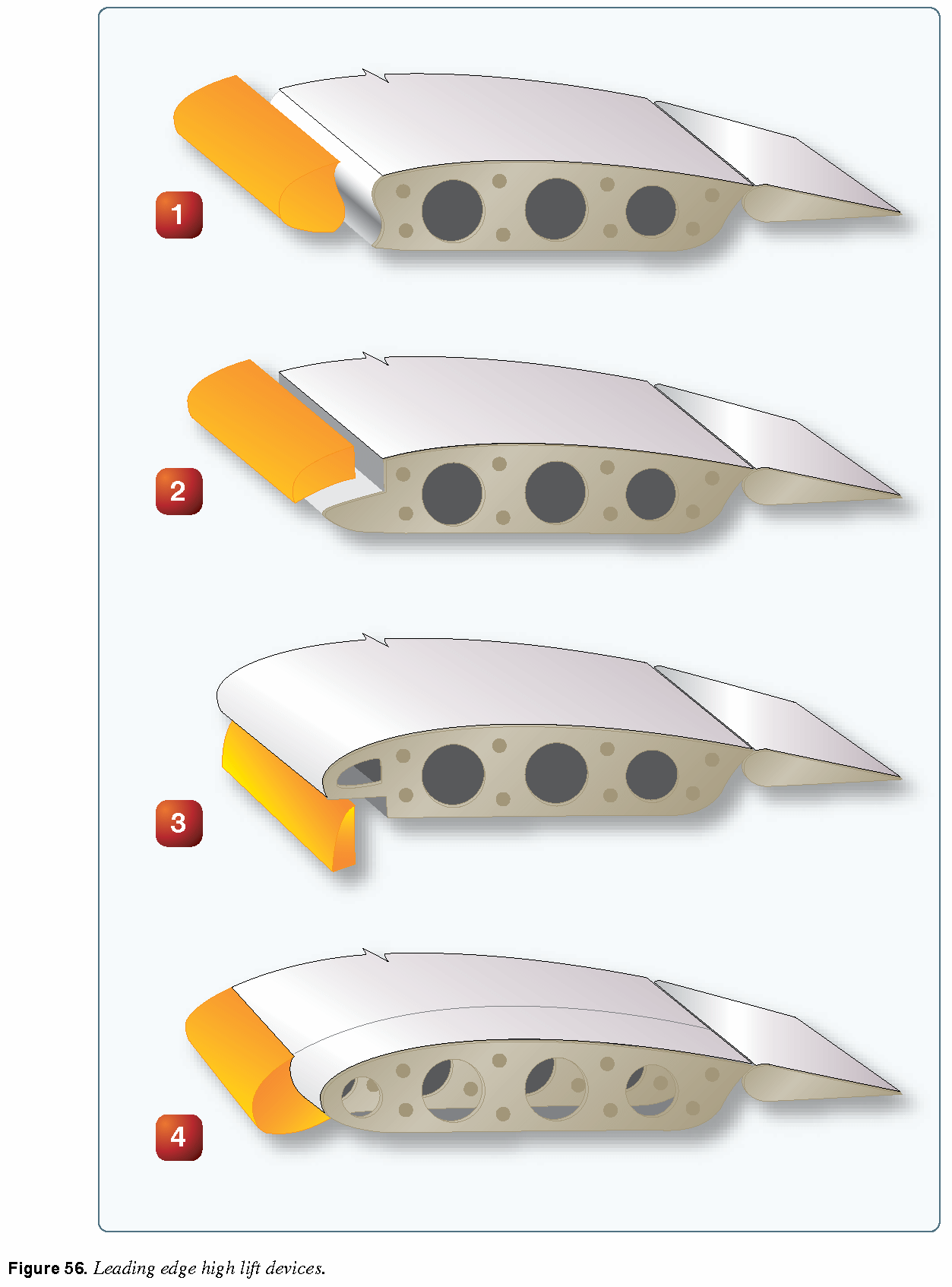Secondary Flight Controls
Spoilers
- Can also be used for roll control or adverse yaw
- Can provide a steeper decent angle
- Reduces ground roll during landing
Trim
- Trim tabs
- Move opposite of the control surface
- Counters control pressures
- Usually cable driven or electric-motor driven
- Balance tabs
- Similar to trim tabs, but move automatically with the flight controls
- Used to assist with forces that need more force to control
- Can also be adjustable which can be used as trim
- Servo tabs
- Mounted at end of control surface
- The pilot moves the servo tab, then servo tab moves the rest of the control surface
- Anti-server tabs
- Adds control feel, especially on stabilator
- Provides a force opposing pilots inputs
- Helps make the stabilator less sensitive
- Can also be adjustable to be used as trim
- Ground adjustable tabs
- Fixed tab that can be bent on the ground
- Used to trim airplane for straight-and-level flight
- Adjustable stabilizer
- Use of a jackscrew to change the angle of incidence of the entire horizontal stabilizer
Leading Edge Devices

- Fixed slot
- Moveable slot
- Leading edge flap
- Leading edge cuff
- Fixed slot
- Does not increase wing camber
- Directs airflow above the wing which increase the coefficient of lift
- Moveable slat
- Moves along a track on the front of the wing
- Redirects airflow to the top of the wing
- As AoA increases, the slats move forward
- Delays stall to higher AoA
- Leading edge flaps
- Increases wing camber
- Usually used with trailing flaps to reduce nose down pitching moment
- Small deflections, gives more lift
- Leading edge cuff
- Increase wing camber
- Fixed on the front of the wing
- Delays stall to higher AoA
Pilot's Handbook of Aeronautical Knowledge pg. 6-9
